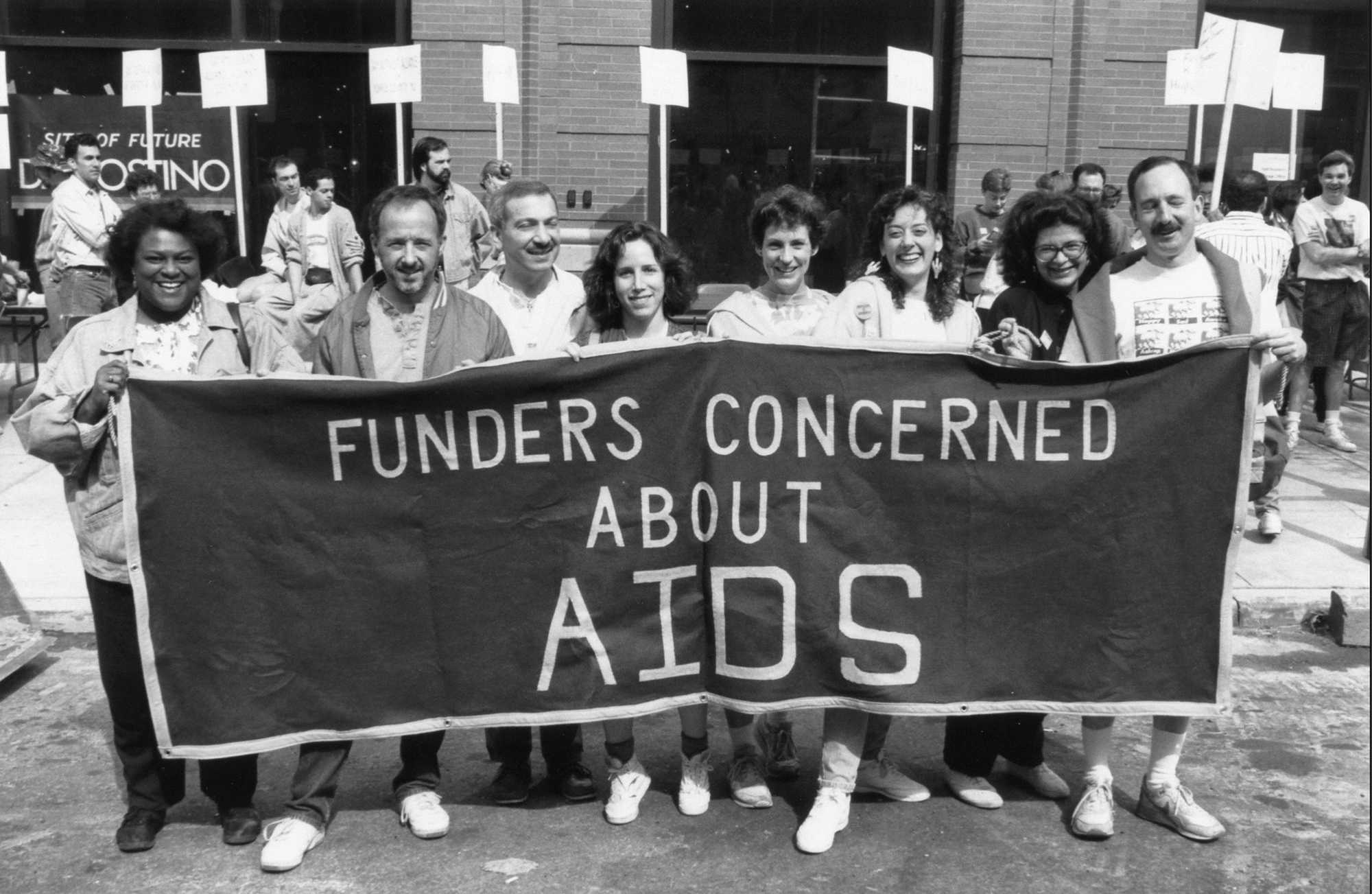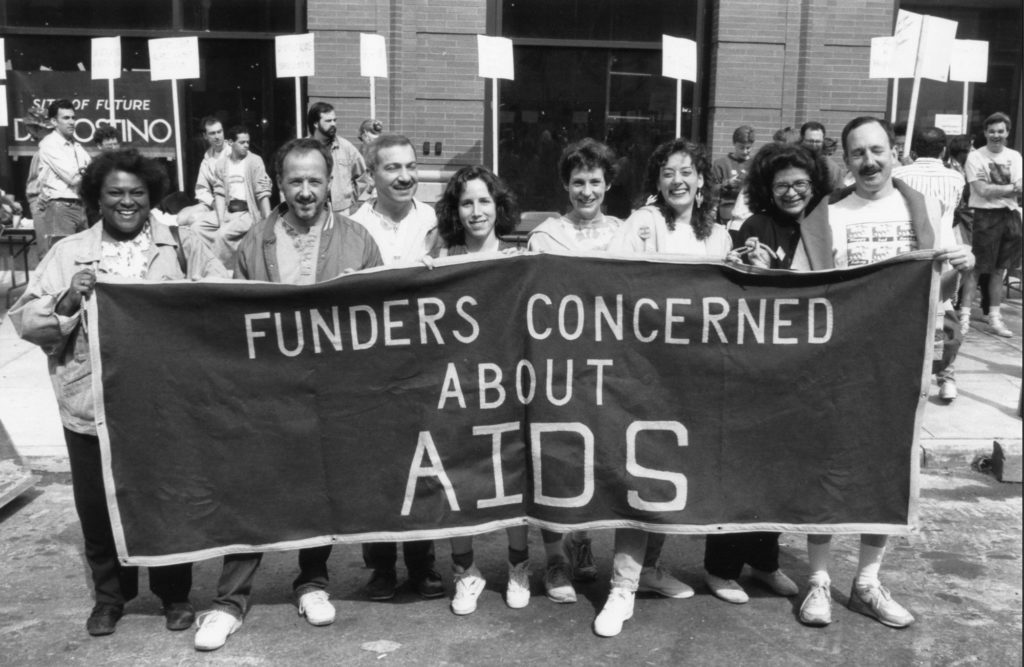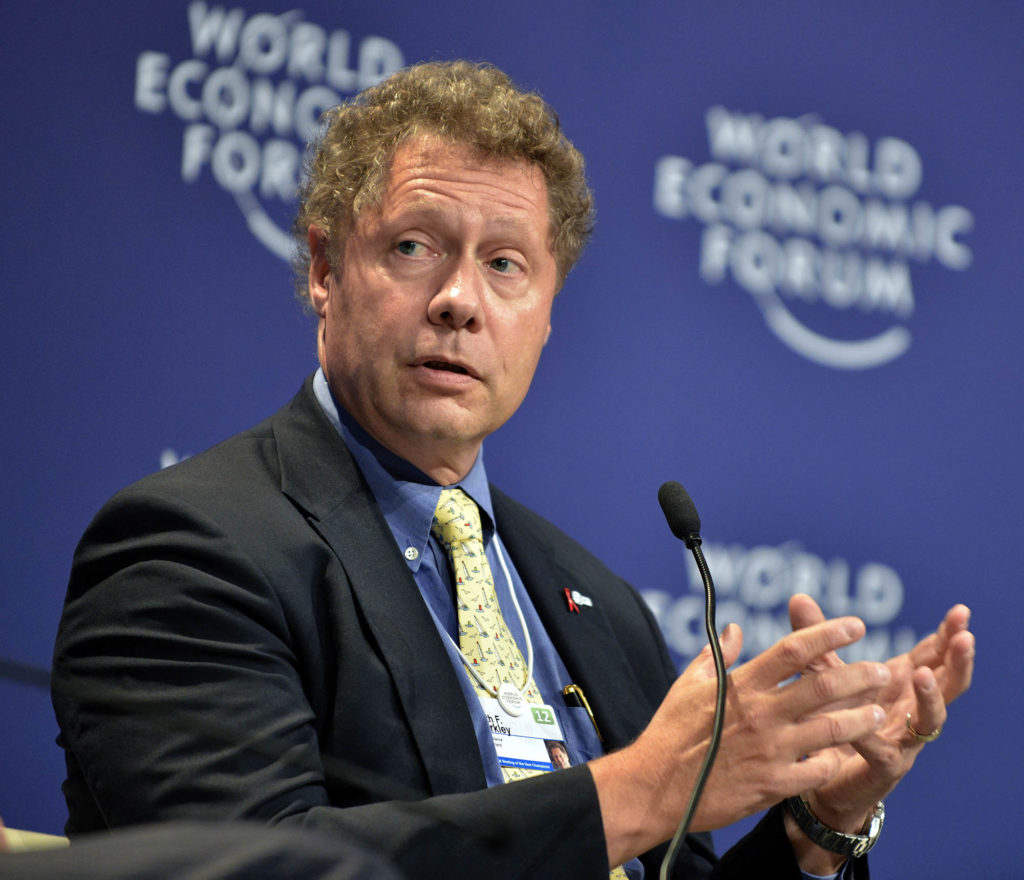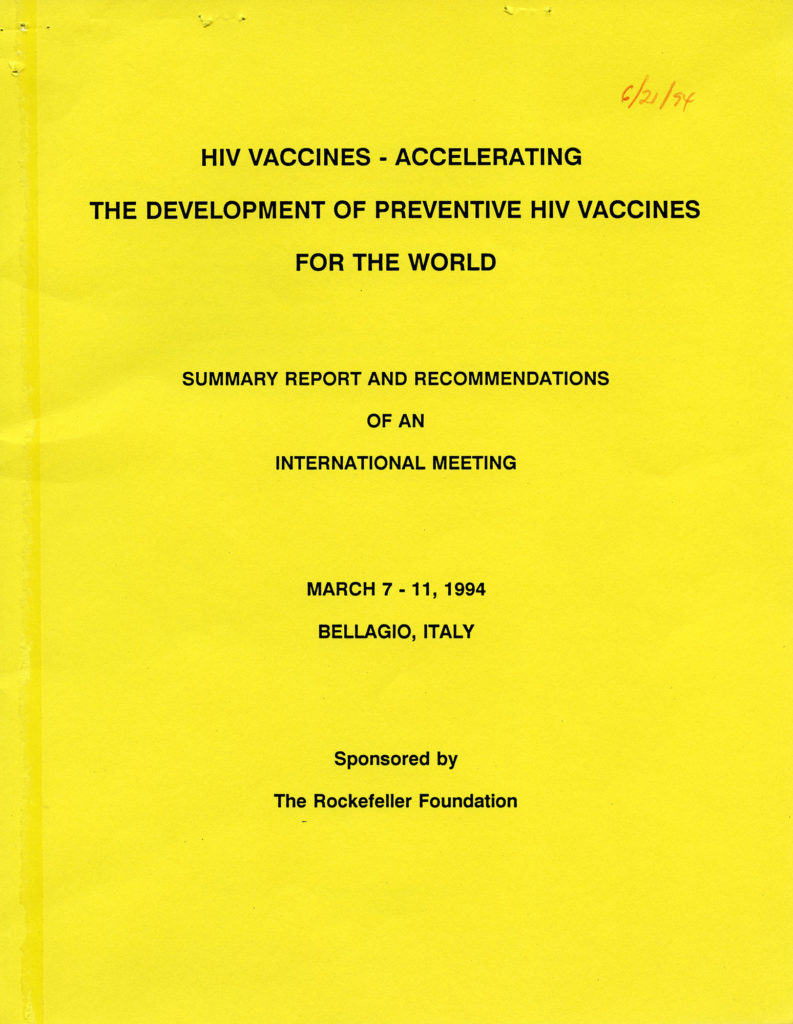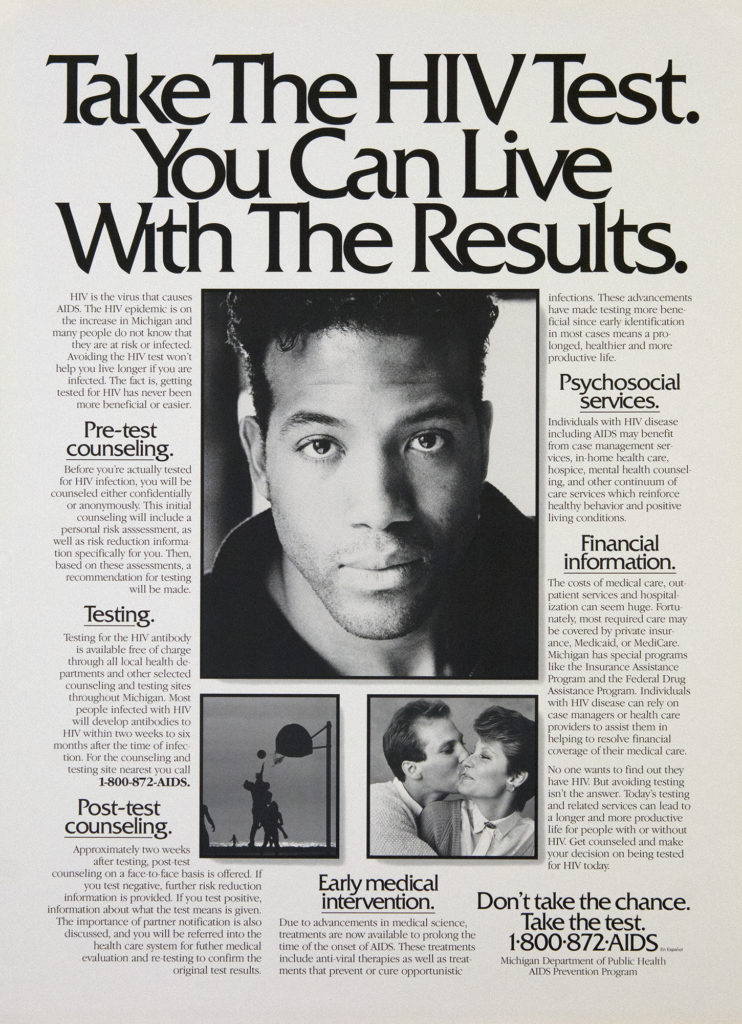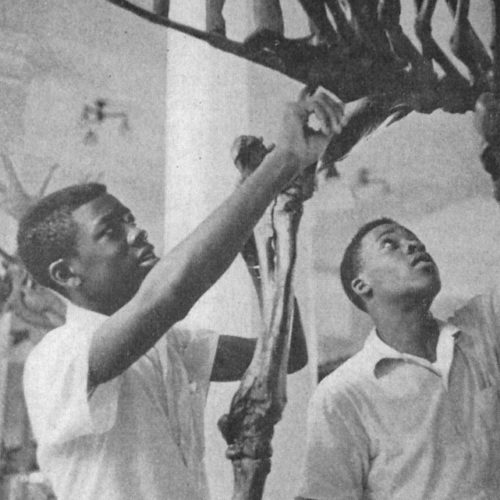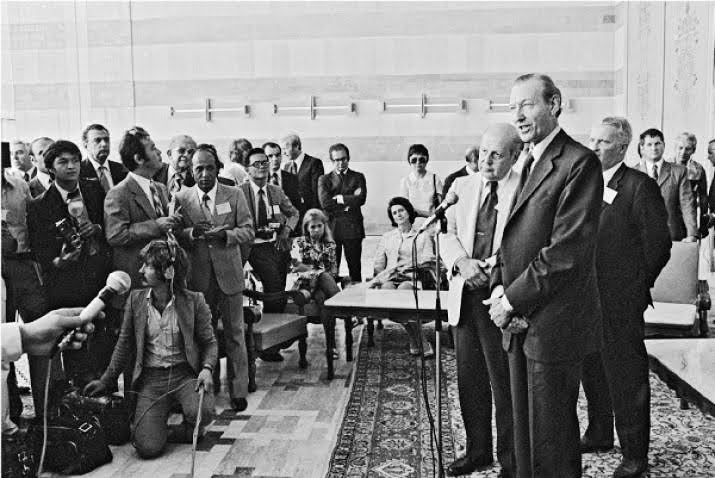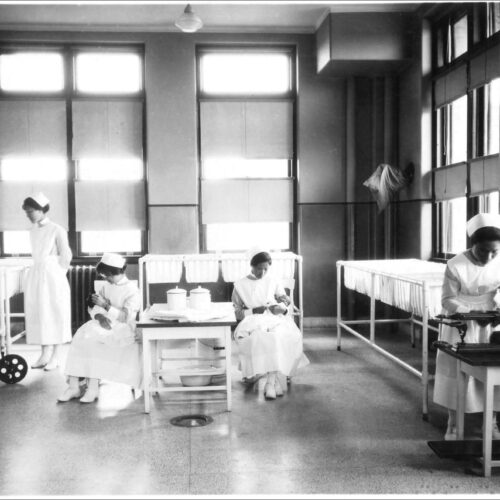An Alarming New Illness Emerges
In June 1981, the Centers for Disease Control and Prevention (CDC) reported on the small outbreak of a new and perplexing illness among gay men in California. As the outbreak continued to spread, in 1982 the CDC named it Acquired Immune Deficiency Syndrome (AIDS). Throughout the early 1980s, scientists continued to investigate the causes and transmission of AIDS. While the disease had been discovered among homosexual men, infections spread throughout other communities as well. In 1983, a virus was determined to be the causal agent and by 1986, the term Human Immunodeficiency Virus (HIV) was introduced into the lexicon. These were the early years of an epidemic.
AIDS had infected over 150,000 Americans by the end of the decade.
And yet, because the vast majority of the disease’s early victims were gay men, homophobia and prejudice meant that it took years of activism and advocacy to put AIDS onto the national agenda in the US. Members of the media and others referred to AIDS as “gay cancer,” spokesmen from the Reagan administration openly joked about the disease in the early 1980s, and it was not until 1987 — six years into his term — that the president delivered a public speech on AIDS. Despite important work by groups like ACT UP and the American Foundation for AIDS Research to raise awareness, federal inaction hampered the US response to the AIDS crisis, both at home and abroad.
As a result, it was clear that the spread of HIV, the virus that causes AIDS, required a massive and well-coordinated international response. By the early 1990s, an estimated 11 million people were infected with HIV, and the World Health Organization (WHO) believed this number would rise to at least 26 million by the year 2000, with roughly 90% of new cases occurring in the developing world.“Accelerating the Development of Preventive HIV Vaccines for the World: Summary Report and Recommendations of an International Meeting, March 7-11, 1994 in Bellagio, Italy,” June 1994, Rockefeller Foundation records, RG 1.27, AIDS Vaccine Initiative Conference, 1993-1994, Rockefeller Archive Center. Today, more than 37 million people — including over 25 million in Africa alone — live with the virus and and these numbers are sure to grow. Despite years of research and experimentation, by the time of this writing, scientists have yet to develop an HIV vaccine.
Philanthropy Tackles HIV/AIDS
The philanthropic response to the AIDS epidemic began as early as 1981 with community foundations funding patient care. Several grantmaking foundations, including Robert Wood Johnson and Ford, joined the fight soon thereafter. More serious efforts continued in 1987 with the creation of Funders Concerned About AIDS, an umbrella organization of grantmakers that aimed to spark wider third sector interest in supporting HIV programs.
Long committed to medical research, the Rockefeller Foundation first contributed toward the funding AIDS research in 1987, with a $50,000 grant to conduct a research study on the control of AIDS in Zaire. Beginning in 1988, the Foundation contributed funding toward AIDS Initiatives in Africa, a program jointly administered by the Health Sciences and Population Sciences Divisions. This program sought to identify the causes of HIV transmission and effective methods of prevention and supports counseling and education programs.
As the AIDS crisis escalated, however, both the public and private sectors were hesitant to fund vaccine work due to production uncertainties and the financial risks of investing in new and potentially ineffective medicine for the developing world. Therefore, most support went to HIV prevention education and health care programs that had thus far failed to slow the virus’s spread.
In March 1994, the Foundation hosted a landmark meeting that paved the way for the world’s first major HIV vaccine initiative, the Conference on HIV Vaccine Development, at the Bellagio Conference Center.

Dubbed the “single most diverse, intense AIDS vaccine think tank ever held” by Science magazine writer Jon Cohen, the meeting brought together 24 different policymakers, industry reps, and health leaders to identify the obstacles to developing a preventive HIV vaccine, including the Bill and Melinda Gates Foundation, international governments across Europe and North America and corporations, and major pharmaceutical companies. By the end of the conference, the attendees had pledged to launch a new organization to overcome these obstacles: the International AIDS Vaccine Initiative (IAVI).
While IAVI has yet to develop a vaccine, the organization’s creation still represents a landmark moment in the fight against AIDS. The first product development partnership (PDP) dedicated to HIV vaccine development, IAVI inspired new public-private cooperation in medicine, placed HIV vaccine work atop the global health agenda, and sparked scientific breakthroughs that have brought us closer to developing an HIV vaccine today.
The Rockefeller Foundation’s Early Work on HIV
In addition to the grants made in Africa in the late 1980s, the Rockefeller Foundation made several other AIDS-related grants, including helping fund the creation of the AIDS and Reproductive Health Network at Harvard. Over the next twelve years, the Foundation spent $20 million on over 100 different AIDS grants.“AIDS Initiatives in Africa Grants,” December 1, 1988, Rockefeller Foundation records, SG 1.24, AIDS Initiatives in Africa, Rockefeller Archive Center; Rockefeller Foundation, 1988 Annual Report, 16-17, 23, 55; Angela Matysiak, Health and Well-Being: Science, Medical Education, and Public Health (New York: The Rockefeller Foundation, 2014), 269, 273.
(Later, in 2001, in response to a United Nations call to action, the Rockefeller Foundation and partner organizations committed $100 million for the Mother to Child Transmission Plus Initiative, based at Columbia University’s Mailman School of Public Health.)
New Directions: Prioritizing HIV Vaccine Work
It was not until the Foundation hired Seth Berkley, however, that it would begin its initial push for an HIV/AIDS vaccine. Before becoming Associate Director of the RF’s Health Sciences Division in 1988, Berkley had worked as an epidemiologist with the CDC and spearheaded various AIDS programs for Uganda’s Ministry of Health on behalf of the Carter Center.
As a result, he had a firsthand view of AIDS’ devastating effects on sub-Saharan Africa and became convinced only a vaccine could stem the damage.
RF leaders agreed, but worried that the Foundation lacked the resources to single-handedly fund long and costly vaccine development programs, particularly given the mixed results of such programs and the public sector’s inconsistent support for them.
In turn, Berkley, RF president Peter Goldmark, and Peggy Dulany, an RF trustee and the great-granddaughter of John D. Rockefeller, Sr., began discussing how they might leverage RF resources to help spark a new global campaign for an HIV vaccine. Angela Matysiak, Health and Well-Being: Science, Medical Education, and Public Health (New York: The Rockefeller Foundation, 2014), 269-71.
To jump-start this campaign, Berkley decided it was necessary to identify, and then devise strategies to address the major obstacles to developing such a vaccine. To do so, Berkley proposed the RF host a meeting of key public, private, and third sector health leaders at the Bellagio Conference Center in March 1994.
By this time, the Foundation had established itself as a key convener in global health and since the late 1970’s had hosted meetings in this field at Bellagio that had produced several ideas and institutions of lasting import: the theory of primary selective health care, the Task Force for Child Survival (today the Task Force for Global Health) and the Global Alliance for Vaccines and Immunizations (GAVI). Collectively, these outcomes had given Bellagio an international reputation as an “action-oriented center” that encouraged “new thinking and new approaches to problem solving.” Background on the Bellagio Population and Development Forum, May 19, 1993, Rockefeller Foundation records, RG 1.30, Bellagio Population and Development (Forum), Rockefeller Archive Center.
The HIV Vaccine Conference
The HIV conference was no different. Held in March 1994, the Conference on HIV Vaccine Development convened 24 scientists, policymakers, and industry representatives from 12 different countries. The meeting was hailed by Science magazine as
The single most diverse, intense AIDS vaccine think tank ever held.“Discussion Draft: The First Decade of the International AIDS Vaccine Initiative,” December 2, 2006. Document provided by the Rockefeller Foundation.
The participants identified a lack of funding as the largest obstacle to HIV vaccine development — they estimated that the public and private sectors had spent over $6 billion in 1993 on preventive services and health care, but only $160 million on vaccine work.
The attendees also noted that most research funding came from Western agencies, which had to divide their time, effort, and finances between several health priorities and tended to only study HIV strains found in the developed world. With over 90% of new HIV cases located in developing countries, the participants concluded, the world’s research portfolio on an HIV vaccine was noticeably thin.
Importantly, the attendees also drilled down on production logistics. To date, the manufacturing of vaccines fell almost completely on large pharmaceutical companies. These companies, however, tended to see new vaccines as risky and uncertain investments. How many people would have themselves inoculated? What was a fair price point for the new medicine? Would the public sector help subsidize the costs of production? And did developing nations have the technology and infrastructure to develop and administer a new vaccine effectively?“Summary Report and Recommendations,” Conference on HIV Vaccine Development.
Collectively, these questions led the 24 representatives to conclude that
There is no coordinated international strategy backed with adequate resources for the development of preventive HIV vaccines appropriate for use throughout the world. Summary Report and Recommendations, Conference on HIV Vaccine Development.
To build this strategy, the participants agreed to launch a new “global HIV vaccine initiative” that would create public-private partnerships to fund, develop, and distribute a long-lasting, affordable, and easily-administered vaccine for both the developed and developing world.Summary Report and Recommendations, Conference on HIV Vaccine Development.
The International AIDS Vaccine Initiative
Following several smaller meetings, Berkley announced the RF would help launch the International AIDS Vaccine Initiative (IAVI) to meet this ambitious goal. With Berkley as CEO, the Rockefeller Foundation initially housed IAVI and invested $2.5 million of seed money in the organization in 1996.
This was a crucial investment. Encouraged by the RF’s support, the Gates Foundation committed over $125 million to IAVI between 1998 and 2006, and others soon followed, including the World Bank, the Elton John AIDS Foundation, and the Alfred P. Sloan Foundation.
By 2001, IAVI had $239 million to invest in new vaccine research and development. What was once a one-employee operation housed within the Rockefeller Foundation had become, by 2006, a global institution with over 200 employees working in five different offices across the world.
As Seth Berkley later recalled, this growth would not have been possible without the RF’s initial support. The Foundation had successfully leveraged its reputation in public medicine to kickstart new HIV vaccine work. Matysiak, 271-75; “Entering a New Decade: Opportunities for the International AIDS Vaccine Initiative to Accelerate the Search for an AIDS Vaccine, Meeting Report, November 28-December 1, 2006.” Document provided by the Rockefeller Foundation.
We were going to influence the world on a topic that was so expensive and so big…There was a level of credibility that came from being part of the Rockefeller Foundation. Angela Matysiak, 2006 Meeting Report, “Entering a New Decade,” p. 274.
Lessons Learned
As IAVI’s work proceeded, researchers, board members, and other health experts gathered once more at Bellagio to assess the organization’s work.
Looking back on the Initiative’s ten-year history, the participants noted that despite more public sector support, big pharma was still hesitant to support the experimental, early-stage research necessary to develop an HIV vaccine. On the whole, IAVI had shown that these companies were “unlikely to fill the role of innovator” and were likely to invest in vaccine production only after proof of concept had been established.
As IAVI closed out the decade, the attendees noted, it would be important to support smaller, less risk-averse, and more “upstream” companies and researchers. In practice, this meant creating a new type of PPP that would support a wider variety of early-stage vaccine discovery research conducted by newer and less well-established scientific actors.
Impact
While a vaccine has proven elusive, the organization has brought us closer to developing one. In 1998, the Initiative organized several academic research networks to identify antibodies that might neutralize a wide array of HIV strains found around the world. In 2002, these networks formed the Neutralizing Antibody Center, which has since helped isolate many of the more than 200 antibodies — broadly neutralizing antibodies — capable of targeting a broad array of HIV strains. Matysiak, 275-76.
These activities helped the Initiative take six HIV vaccine candidates into human trials at 11 different countries by 2006, including the first ones conducted in Germany, India, Kenya, and Rwanda. Three years later, after researchers proved for the first time that a vaccine could prevent HIV infection, IAVI also helped build several research centers in Africa that tested new vaccine candidates and conducted epidemiological studies of the virus. “Discussion Draft: The First Decade of the International AIDS Vaccine Initiative.”
As a result of these achievements, IAVI has become an international leader in the fight against AIDS and made HIV vaccine work a global health priority. As a result of IAVI’s work, one 2006 report noted,
HIV vaccines are now high on the political agenda in many developed and developing countries. “Entering a New Decade: Opportunities for the International AIDS Vaccine Initiative.”
Moreover, IAVI has demonstrated the potential benefits of public-private partnerships. By 2006, one report estimated 92 such partnerships across the globe, including over a dozen working on developing drugs and vaccines. By this time, the Rockefeller Foundation had helped found two of these partnerships: the Medicines for Malaria Venture, which develops antimalarial drugs in collaboration with the World Bank and governments of Switzerland, the Netherlands, and the United Kingdom; and the Global Alliance for Tuberculosis Drug Development, which subsidizes the development of affordable TB medicine in the developing word. Matysiak, 277-79.
Today, these partnerships — encouraged by and modeled on the Rockefeller Foundation’s creation of IAVI — continue to inform vaccine development, including current efforts to develop one for COVID-19.
Research This Topic in the Archives
- “Funders Concerned About AIDS (09600944),” 1996-1998, Ford Foundation records, Central Index, Grants, E-G, Rockefeller Archive Center.
- “RF 90080 A 20 – New York Community Trust – Funders Concerned about AIDS – Internationa Briefing ,”1990-1991, Rockefeller Foundation records, Projects (Grants), Research Group 1, Sub-Group 1.20-1.23, (A94), Sub-Group 1.20, Rockefeller Foundation, Rockefeller Archive Center.
- “120 – AIDS VACCINE INITIATIVE – CONFERENCE,” 1993-1994, Rockefeller Foundation Records, Projects (Grants), Research Group 1, Subgroup 1.27, AC.2001.003, Bellagio Conference and Study Center, Series 120, Rockefeller Archive Center.
- “RF 92092 A 73 – INTERNATIONAL HIV/AIDS ALLIANCE (ENGLAND) – PREVENT SPREAD OF AIDS IN DEVELOPING COUNTRIES,” 1994-1996, Rockefeller Foundation records, Projects (Grants), Research Group 1, Sub-Group 1.25 (A99), Rockefeller Archive Center.
- “RF 96034 #109 – JOHNS HOPKINS UNIVERSITY – WORKSHOP ON CLINICAL TRIAL OF STD TREATMENT FOR HIV PREVENTION,” 1996-1997, Rockefeller Foundation records, Projects (Grants), Research Group 1, Sub-Group 1.26, AC.2000.056, Rockefeller Foundation, Rockefeller Archive Center.
- “TML – Drugs for HIV Infection – Treatment Guidelines,” 2004, Rockefeller University collection of The Medical Letter publication, Rockefeller Archive Center.
